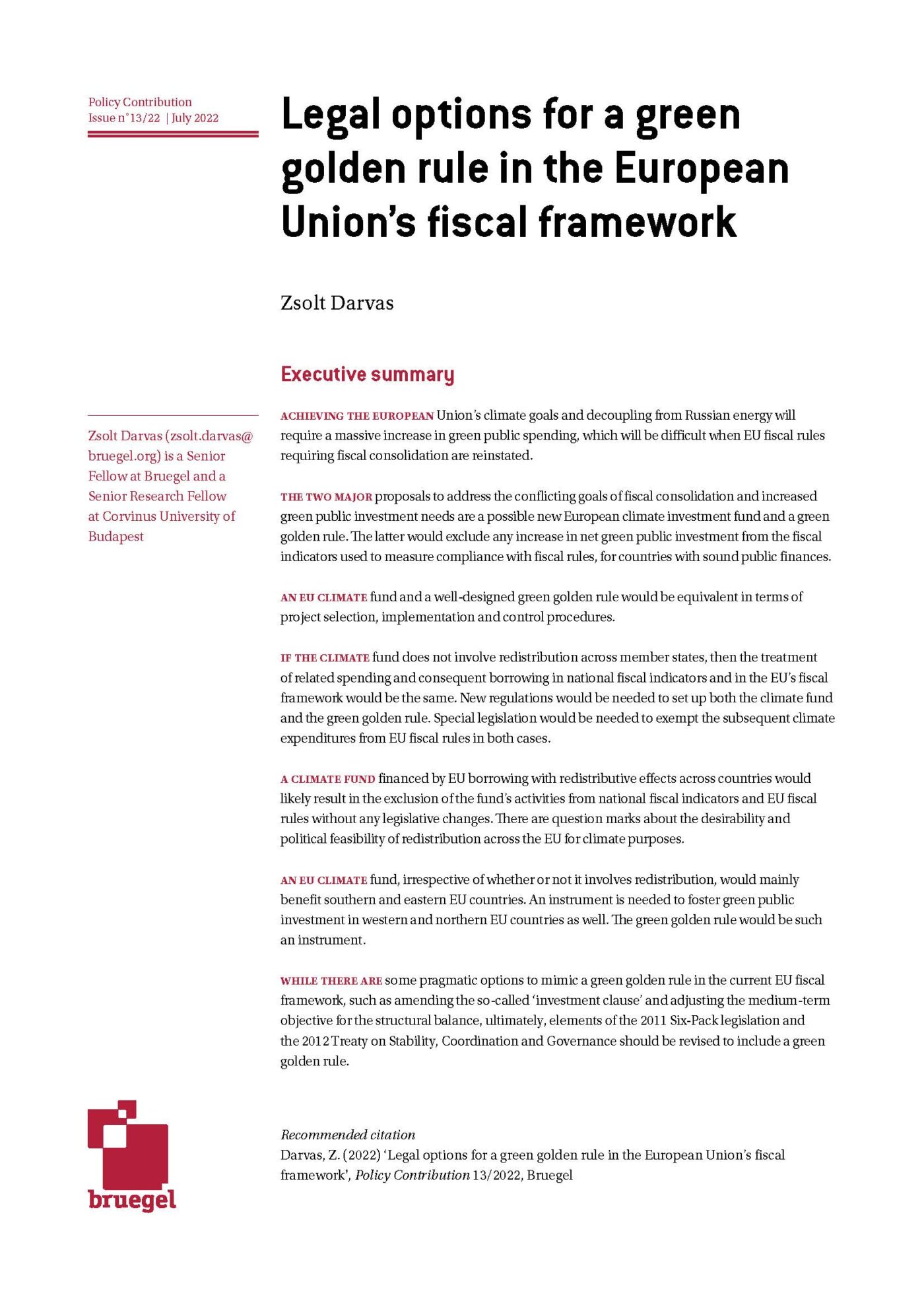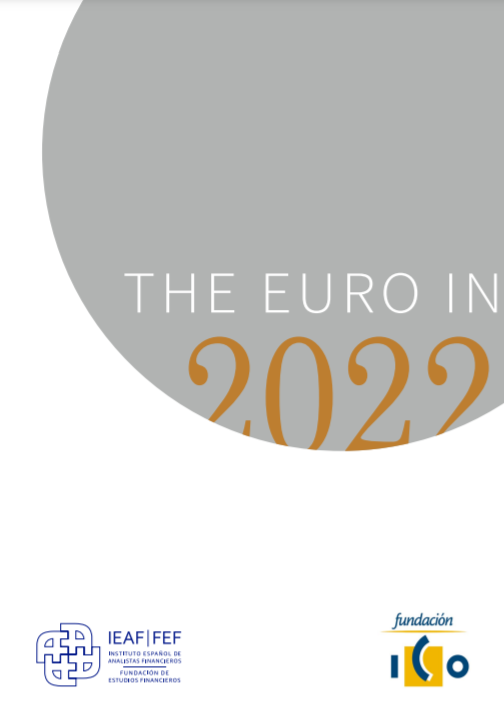Blog Post
The latest European growth-rate estimates
The quarterly growth rate of the euro area in Q1 2019 was 0.4% (1.5% annualized), considerably higher than the low growth rates of the previous two quarters. This blog reviews the reaction to the release of these numbers and the discussion they have triggered about the euro area’s economic challenges.
Two important announcements regarding European economic growth took place in the course of the last two weeks. First, Eurostat announced its preliminary flash estimate for real growth for the euro area and the EU in Q1 2019, on April 30th. And then, on May 7th, the European Commission published its Spring Economic Forecast.
The incoming numbers were important given that growth slowed down substantially in the second half of 2018, especially in the euro area. To illustrate, the European Commission forecast growth in the euro area to be 1.2% in 2019 compared to a projection of 2.0% a year ago (for 2018, growth was at 1.9% vs the projected 2.3% a year ago). However, the preliminary flash estimate for the euro area was 0.4% (1.5% annualised), considerably higher than 0.1% in Q3 2018 and 0.2% in Q4 2018.
The slowdown in growth was global, but particularly more pronounced in the euro area. A VoxEU column by the European Commission officials working on the forecast explains why: “All in all, it appears unlikely that the business or financial cycles are responsible for the slowing of growth in Europe,” the authors claim. The real culprit is the slowdown in global trade growth, especially imports of the euro area’s main trading partners, and the excessive reliance of euro-area manufacturing on external demand.
Commission officials also stress the macroeconomic impact of transitory shocks on the European automotive sector that added to longer-term, more persistent challenges. Specifically, the lack of certificates for a large type of models in accordance with the new Worldwide Harmonised Light Vehicles Test Procedure (WLTP) by September 1st – the date the regulation took effect in the EU – led to inventory accumulation and a temporary halt in production, especially in Germany. The Commission estimates that the reduction in the output of the German automotive sector in Q3 2018 (8%) translated into a 0.6 percentage-point (pp.) loss in GDP for Germany, 0.2 pp. in Czechia, Hungary and Slovenia and 0.1 pp. in Slovenia (see Figure 1).
What’s more, “the WLTP effects added to regulatory discussions on limitations to the use of diesel cars in cities, the ongoing ‘Dieselgate’ affair, and falling Chinese and global demand for European cars. The impact of these factors overlaps with more fundamental structural changes affecting the demand for combustion-engine cars (e.g. alternative power sources, automated driving, car sharing)”.
Figure 1

Source: European Commission, via Vox EU
Finally, the authors of the column note the divergence between “the ongoing weakness of manufacturing and export orders” and “dampened, but still robust domestic demand and continued employment growth”. Highlighting several past episodes of divergence between the “the domestically oriented part of the economy (proxied by confidence in the services sector, which represents 73% of value added)” and “the manufacturing sector (17% of euro-area value added)” (see Figure 2) they conclude that “domestic demand may well carry the economy through the current weakness of manufacturing if it is not too deep or protracted”. Hence their projection, for ”a moderate rebound over the course of this year as global demand bottoms out and some temporary negative factors fade”, will “depend on domestic demand holding up”.
Figure 2

Source: European Commission, via Vox EU
Matthew Klein agrees on the salience of domestic demand for euro-area growth. He stresses that the slowdown has been “driven by steady deceleration of household spending” and that “consumption is ultimately what makes business investments profitable, so if European consumers keep cutting back, European businesses will either have to sell more abroad as exports or cut investment”.
However, Klein is also pessimistic about the flash growth estimates. Writing before data on growth composition became available, he posits that there was no improvement in domestic demand at the beginning of this year. In particular, he cites available evidence on inventories accumulation and the trade balance. Given inventory shedding in the previous quarter – subtracting a whole 0.4 pp. from overall growth, “if inventories neither grew nor shrank in the first quarter, the latest numbers would therefore imply decelerating domestic demand for the bloc as a whole – the opposite of what many observers seem to be saying”. Moreover, “European spending on imports from abroad plummeted in the first few months of 2019, while exports stayed flat. That necessarily means that domestic production rose more than domestic demand. Europeans depended on foreigners for their growth because their domestic economy was too weak.
Gavyn Davies is more upbeat, as he regards the overall pessimism about European growth as exaggerated. In particular, Davies identifies two favourable factors for growth this year. First, he argues that stimulus in China may finally deliver a delayed effect on Europe. Citing research by Goldman Sachs, he notes that the stimulus package, one-third the size of the 2016 one and relatively more geared towards infrastructure and consumer spending, can still boost euro-area activity by 0.6 pp. in 2019. Second, he maintains that a fiscal thrust in the three largest euro-area economies – 0.8 pp. of GDP in Germany, 0.4 pp. in France and 0.5 pp. in Italy – is very likely this year. He concludes that this impulse can contribute at least 0.5 pp. to growth in the euro-area economy.
The short-term effects notwithstanding, the themes discussed in the above-summarised columns also cast a long shadow on the debate about the euro-area’s bigger economic challenges. One theme is the viability of Germany’s growth model and the resulting implications for Europe. Wolfgang Munchau, for instance, agrees with President Macron’s prediction – made in the sidelines of the Western Balkans summit in Berlin in April – that “the German growth model has perhaps run its course”. The reason, Munchau points, is the profound technological change in the automotive sector. “The German car industry is now trying to catch up with the technology of electric batteries, where the knowhow resides in the US and China. Germany is also trying to catch up in the research on driverless cars. On many levels, it has failed to make the transition to the 21st century.”
Michael Mackenzie in the Financial Times quotes Silvia Dall’Angelo at Hermes Investment Management, who notes that the slowdown is related to the structural transition of China as its economy matures, and adds that “policymakers in Germany must attempt to mitigate the risks posed to their own economy, and that of Europe by extension, by the Chinese structural slowdown. They should prioritise the stimulation of consumption and private investment by reforming the tax system and regulation”.
Munchau puts forward two scenarios that could unfold for Germany and the euro zone. In his own words, “the benign scenario would be for Germany to take the decline of its growth model on the chin, for everybody to converge, for the eurozone to drop its dependency on external surpluses and develop a much greater common economic identity”. Considering that this scenario is unlikely to play out, he adds that “in the not-so benign scenario — the one we are more familiar with — the opposite happens. Member states maximise their perceived competitive advantages against one another. Imbalances widen and financial systems remain prone to crises. And when the financial accident finally happens, Mario Draghi, the current president of the European Central Bank, will no longer be there to do ‘what it takes’”.
The second discussion gravitates around the use of fiscal policy for, as Charles Wyplosz reminds us, with monetary policy overstretched it is the only effective lever left to euro-area policymakers when growth slows down. Wyplosz remarks that the Commission’s approach has proven unrealistic so far. This approach, consistent with the Stability and Growth Pact as he notes, is reiterated in the VoxEU column. It essentially recommends fiscal expansion in member states where fiscal space is available and prudence where the debt ratio is high, and is best summarised in Figure 3. Wyplosz writes that “with interest rates at zero, it would be the right moment to lend and finance public investment, but it is unrealistic to ask a country to indebt itself to help other countries, especially if economic conditions are favourable”. Although the slowing down of China can possibly act as a game-changer, “the [German] government always seems attached to the objective of debt reduction. Full employment, and even labour shortages, barely push it to change its strategy”.
Figure 3

Source: European Commission, via Vox EU
In fact, there is another reason as to why this year’s German planned fiscal thrust may be weaker than expected. A downward revision of tax revenue forecasts has triggered a political debate about whether budgetary plans should be adjusted to make up for the shortfall. However, Bruegel’s Catarina Midoes and Guntram Wolff document that German government revenues and surpluses have been systematically underestimated since the introduction of the debt brake in 2011. Therefore, “the German finance minister and broader German debate could become more relaxed about fulfilling fiscal plans”, with the authors adding that “from a macroeconomic point of view, it makes sense to use fiscal space, including the option to borrow, at a moment of significant macroeconomic risks”. Moreover, “political attention should […] focus on the debt brake and its implementation”, especially “the accuracy of forecasts that determine budgetary planning” but also “the interplay between the debt brake (with its targets for different parts of the government) and the macroeconomic role, including at the European level, of Germany’s general government borrowing”.
Martin Sandbu also joins in on the debate suggesting to focus the discussion about the balanced budget rule towards mechanisms that make sure the surplus will swing to deficit in the next actual downturn. However, he challenges the idea that Germany should reduce its surplus now, “even though it can afford to and could do with more investment in particular”. With German growth now having picked up and “few other countries in Europe […] as obviously near the top of their economic cycle” this makes little economic sense. Meanwhile, Sandbu notes that in France, “Macron has added new tax cuts to handouts already offered to placate the gilets jaunes protesters” when the country is “far from the top of its cycle”. Likewise, this is “a situation where deficit spending is welcome, or at least not something to complain too much about”.
These recommendations evidently run counter to the recipe prescribed by the European Commission. “The economics profession’s complaints against both German and French fiscal proclivities are usually correct”, Sandbu writes. “But this may be the most misplaced point of the cycle to make them,” he adds.
Republishing and referencing
Bruegel considers itself a public good and takes no institutional standpoint. Anyone is free to republish and/or quote this post without prior consent. Please provide a full reference, clearly stating Bruegel and the relevant author as the source, and include a prominent hyperlink to the original post.











